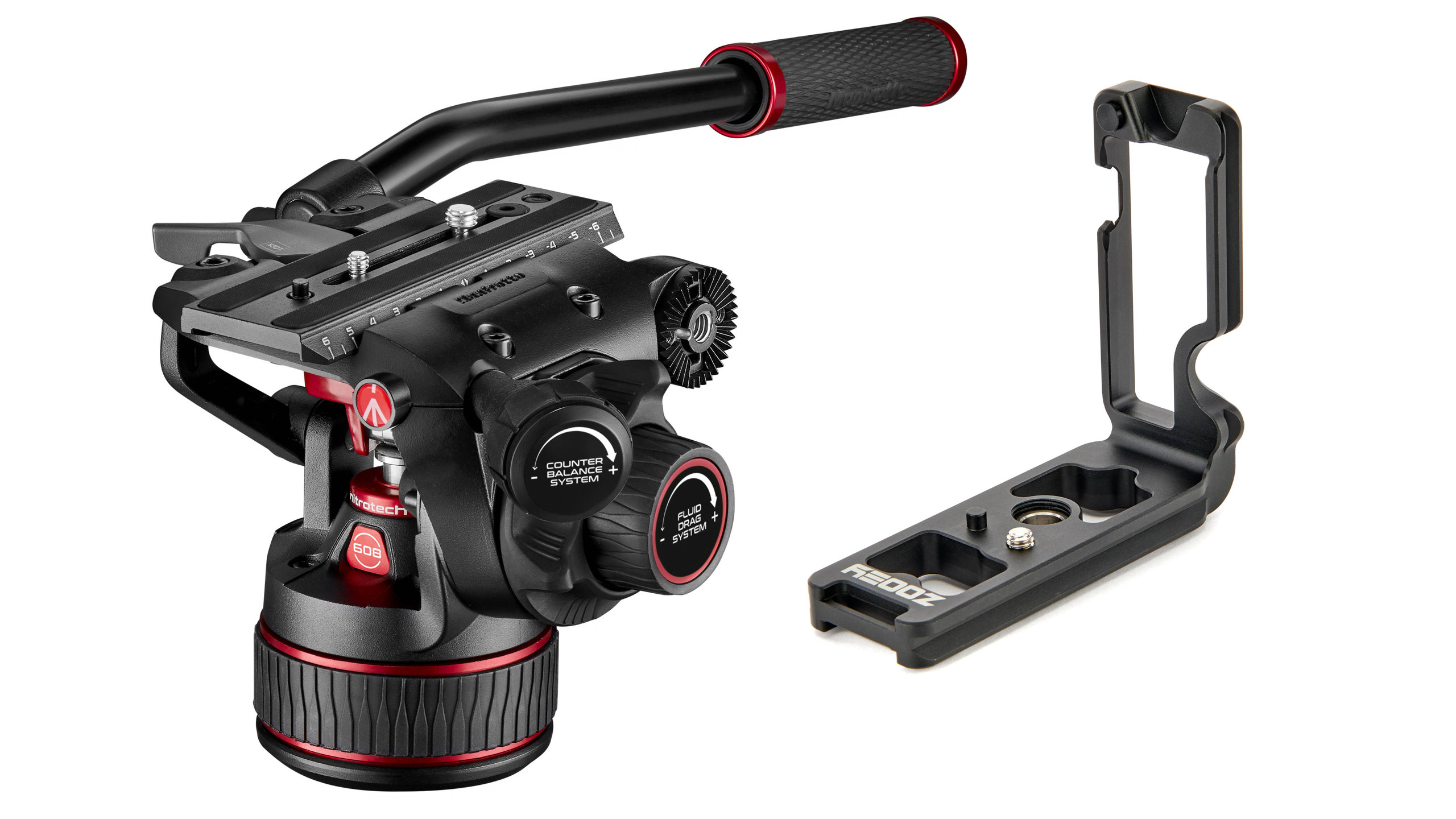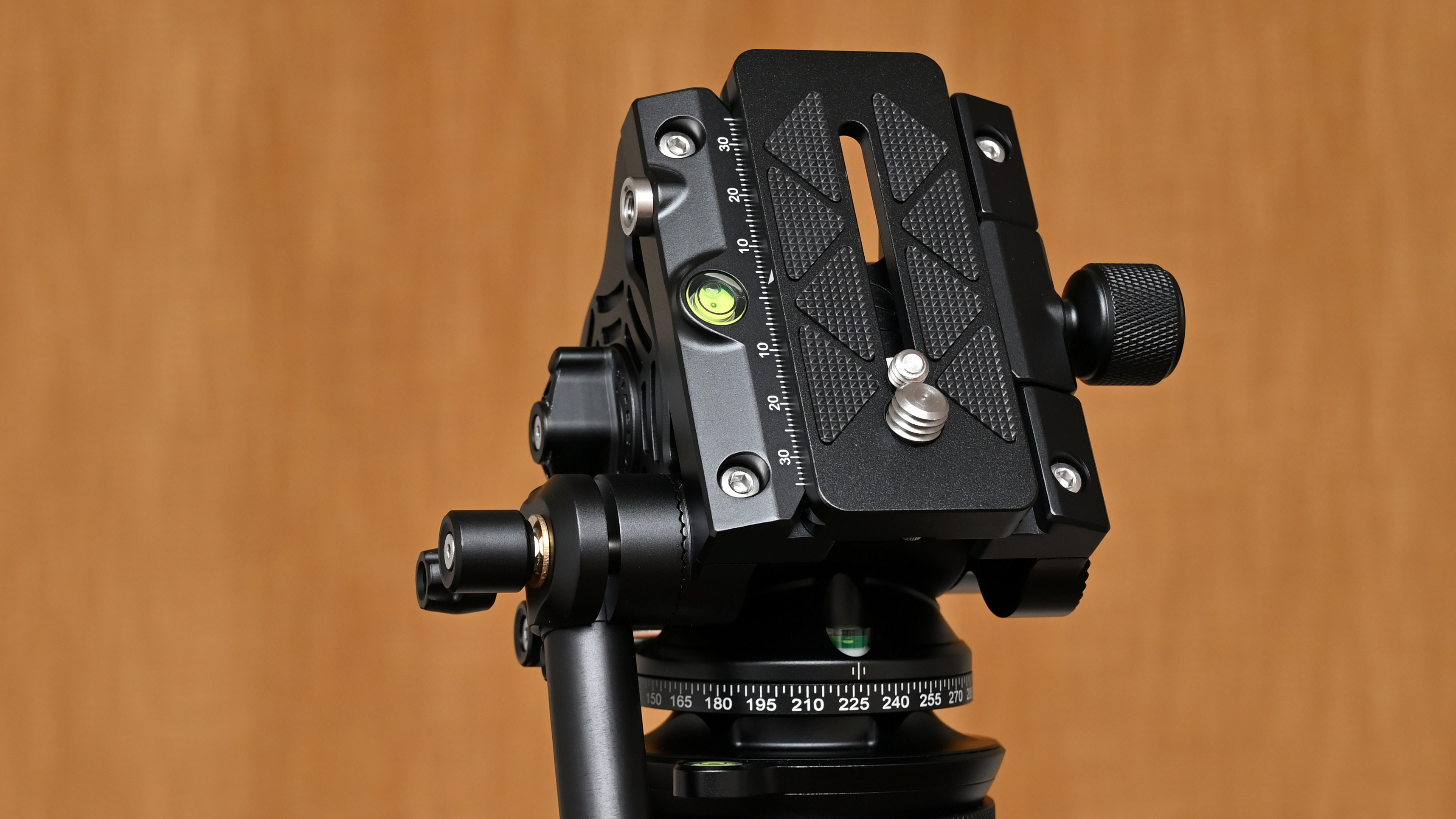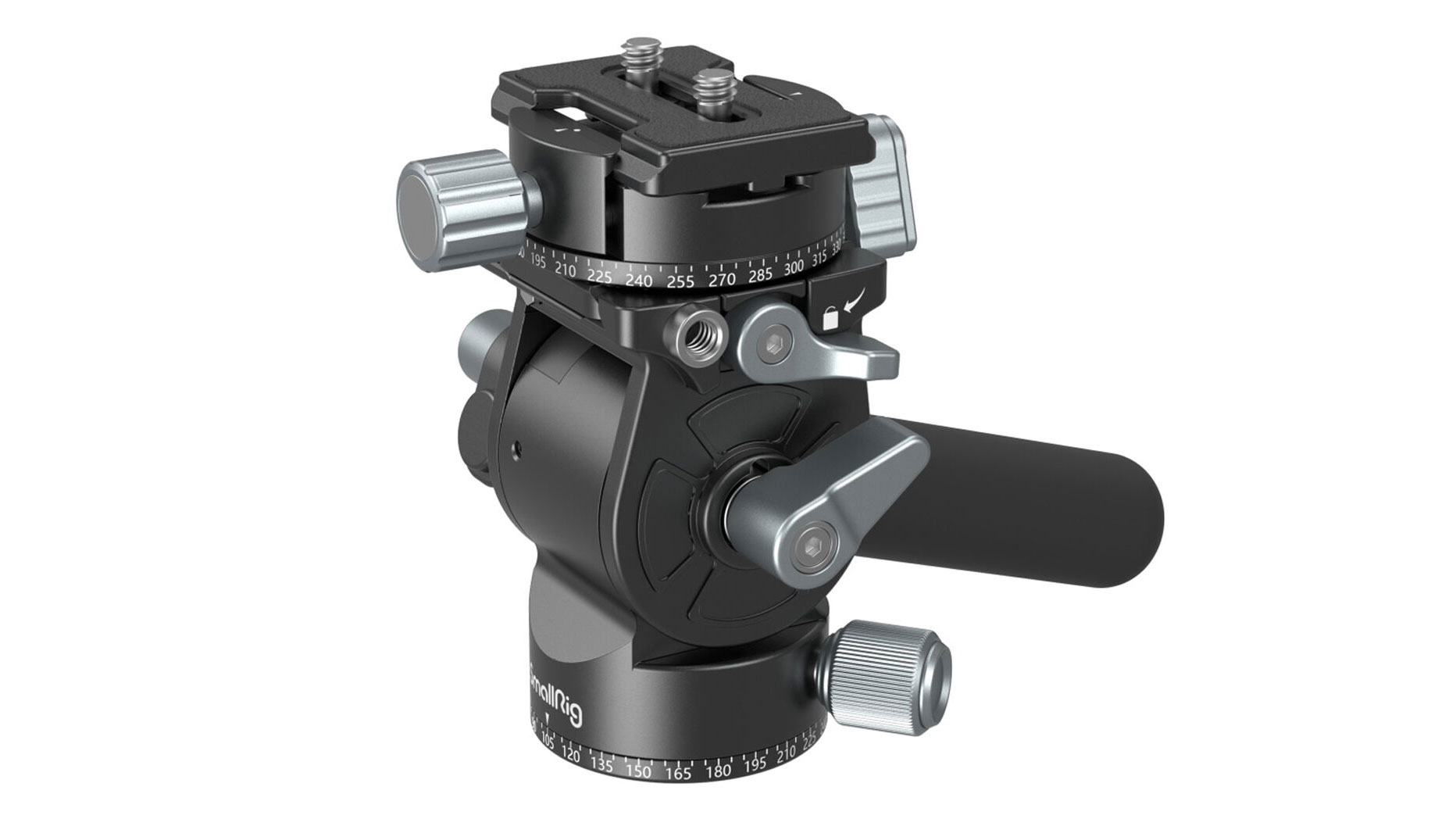
L-brackets are really useful because they let you swap quickly from horizontal shooting to vertical orientation. Most are designed specifically for the Arca Swiss quick release mechanism, which has become the closest thing to a ‘universal’ QR system on the market.

With an L-bracket you don’t need to attach a quick release plate for your tripod head because the L-bracket has Arca Swiss rails built into the base. You slot these directly into your tripod head’s clamp and, if you want to shoot vertically rather than horizontally, you unclip the bracket, rotate it 90 degrees and use another set of rails on the shorter vertical edge to clamp the camera vertically.
It’s a great system. Some of the best L-brackets are designed for specific camera models, like the 3 Legged Thing Zaara One for the Nikon Z9.
Why video heads are great

Now let’s talk about video heads. These are great too. They separate the panning and tilt axes so that you can carry out controlled camera movement while filming in one axis only. In principle you could do this with a regular three-way head, but video heads go further, with fluid capsules that provide a smooth, controlled ‘drag’ and sometimes an internal counterbalance system.
The best video tripods easily outperform the regular sort for any kind of cinematic camera movements. No-one who invests in the best cinema cameras would use anything else.
Video heads also often standardize on the Arca Swiss mount, often coming with a longer camera plate to allow for precise fore-and-aft balancing to make tilt movements more controlled.
Video heads are typically two-way heads not three-way heads. You only need a pan and tilt movement for video, right? You do need to level the base first, but video tripods will often including a levelling base specifically made for the job.
The best tripods for conventional photography don't have any of this and don't need it, but if you want to introduce smooth camera movements in filmmaking, these features become essential.
Why they are 90° opposed
So, what’s the problem? Why can’t I use an L-bracket on a video head to swap between regular horizontal filming and vertical filming for social channels?
It’s because the Arca Swiss mechanism only works in one direction. Camera L-brackets rely on the Arca Swiss rails on the base being aligned from side to side. That’s not a problem on regular photographic tripod heads because you can simply rotate the head to match the side-to-side direction of the rails on the clamp. For vertical shooting, the same applies. With the camera detached and rotated through 90 degrees, the rails on the ‘side’ section of the bracket slot in just the same.
But you can’t do this with a typical video head. These fix the Arca Swiss rails in a front to back orientation so that you can use longer plates to move the camera forwards and backwards to balance its weight.

If you try to attach a camera with an L-bracket, it will be pointed sideways, not straight ahead. You can’t rotate the Arca Swiss base on a video tripod because it’s fixed at this angle deliberately. In theory, you could still pan the camera, very awkwardly, from a sideways position, but you certainly can’t use the head’s tilt axis since this will simply rotate the camera.
Any kind of tilt movement is out of the question with the camera facing sideways. So that seems to be that as far as using L-brackets with video heads is concerned.
This first struck me when I was reviewing the excellent little 3 Legged Thing Airhed Trinity video head. Like all the rest it has Arca Swiss rails fixed in the front-to-back orientation. You can’t change it. I also have 3 Legged Thing L brackets… but I can’t use them together.
Surely there must be an answer?

Now it seems the most natural thing in the world to me to want to use L-brackets with video heads. Has nobody heard of vertical video for social? The only way to do this as far as I can see is to try to find a three-way fluid head so that I can at least tilt the camera on its side and keep the tilt movement – but these are both rare and very often expensive.
There has to be a simpler way to fix this? Maybe an L-bracket maker could design a square cutout in the bracket’s Arca Swiss rails to allow for a front-to-back base alignment, or perhaps video head makers could incorporate a 90-degree clamp rotation for mounting L-brackets?
Let’s keep this in perspective. If you’re not going to do any camera movements it’s not a problem. Just use a ball head, a regular three-way head or use an awkward sideways plate mounting kludge on your video head. If you’re not going to use a tilt movement while filming it’s fine.
But what if you want to shoot vertical video with a 2-way video head with a proper counterbalanced tilt movement? Right now, that’s not how video heads are made, and an L-bracket won’t fix it.
Maybe I’m asking too much. Maybe solutions already exist and I haven’t found them yet. But it does seem to me that this basic 90-degree mismatch between L-brackets and video heads is a silly incompatibility that should have been fixed by now.







